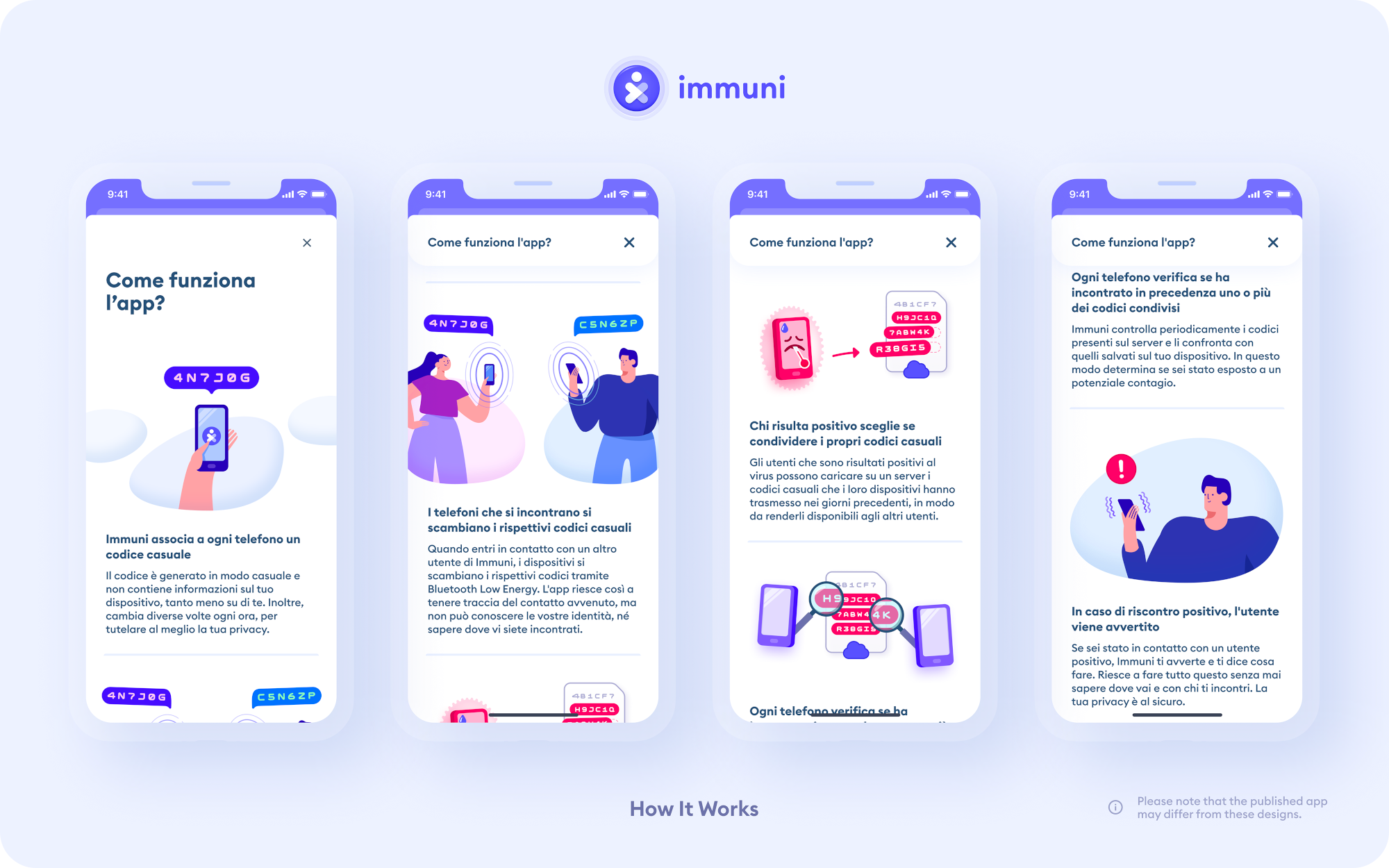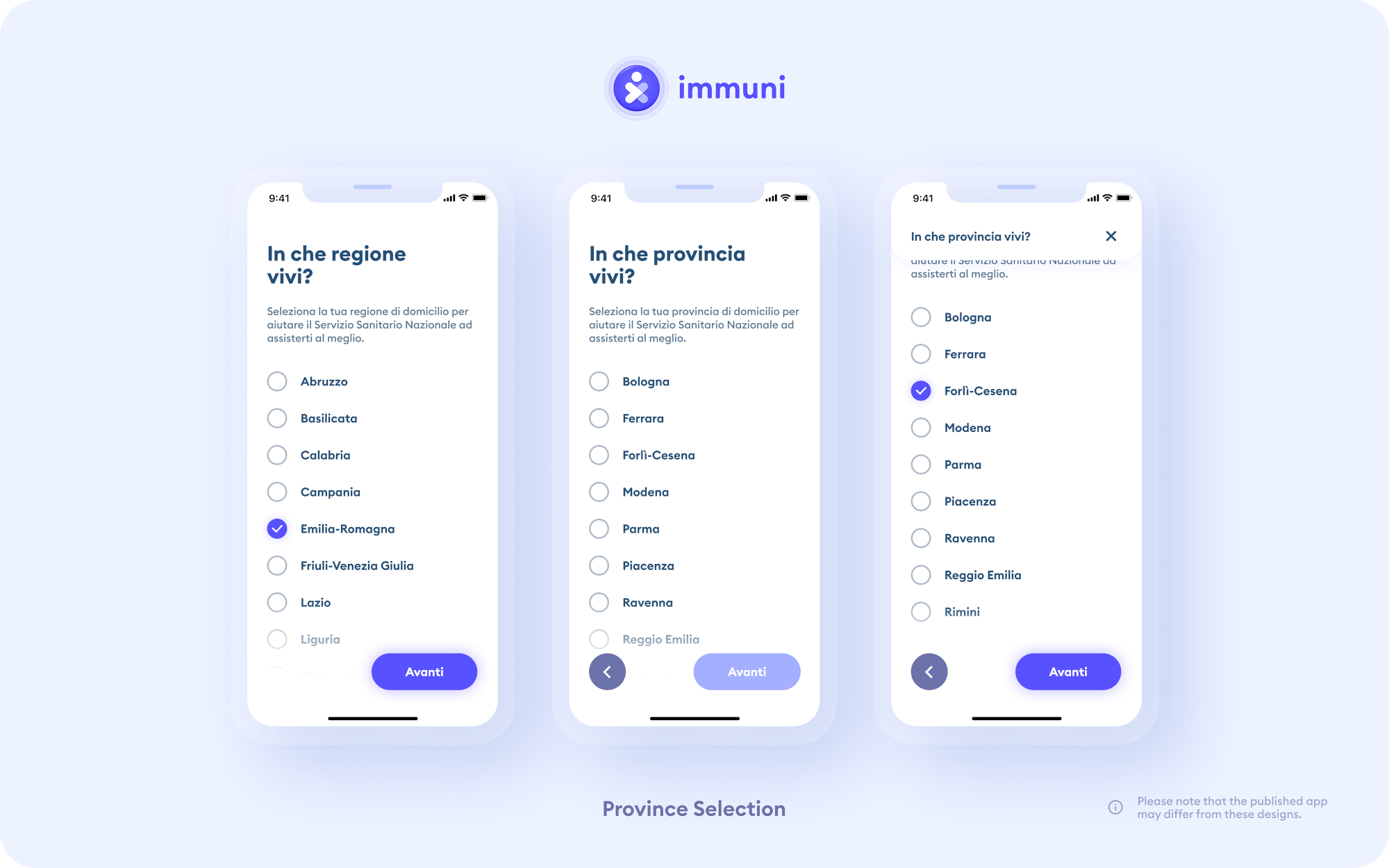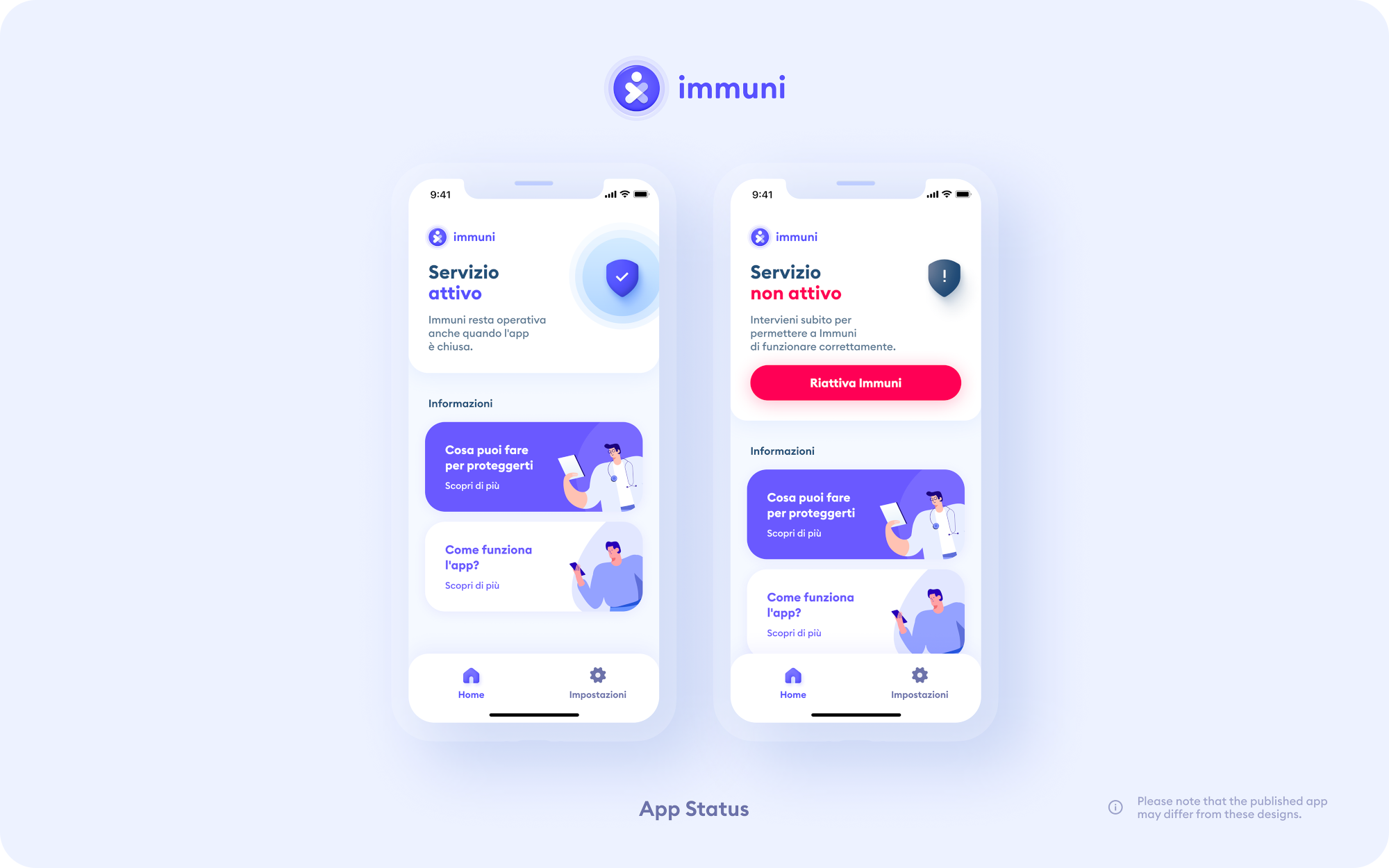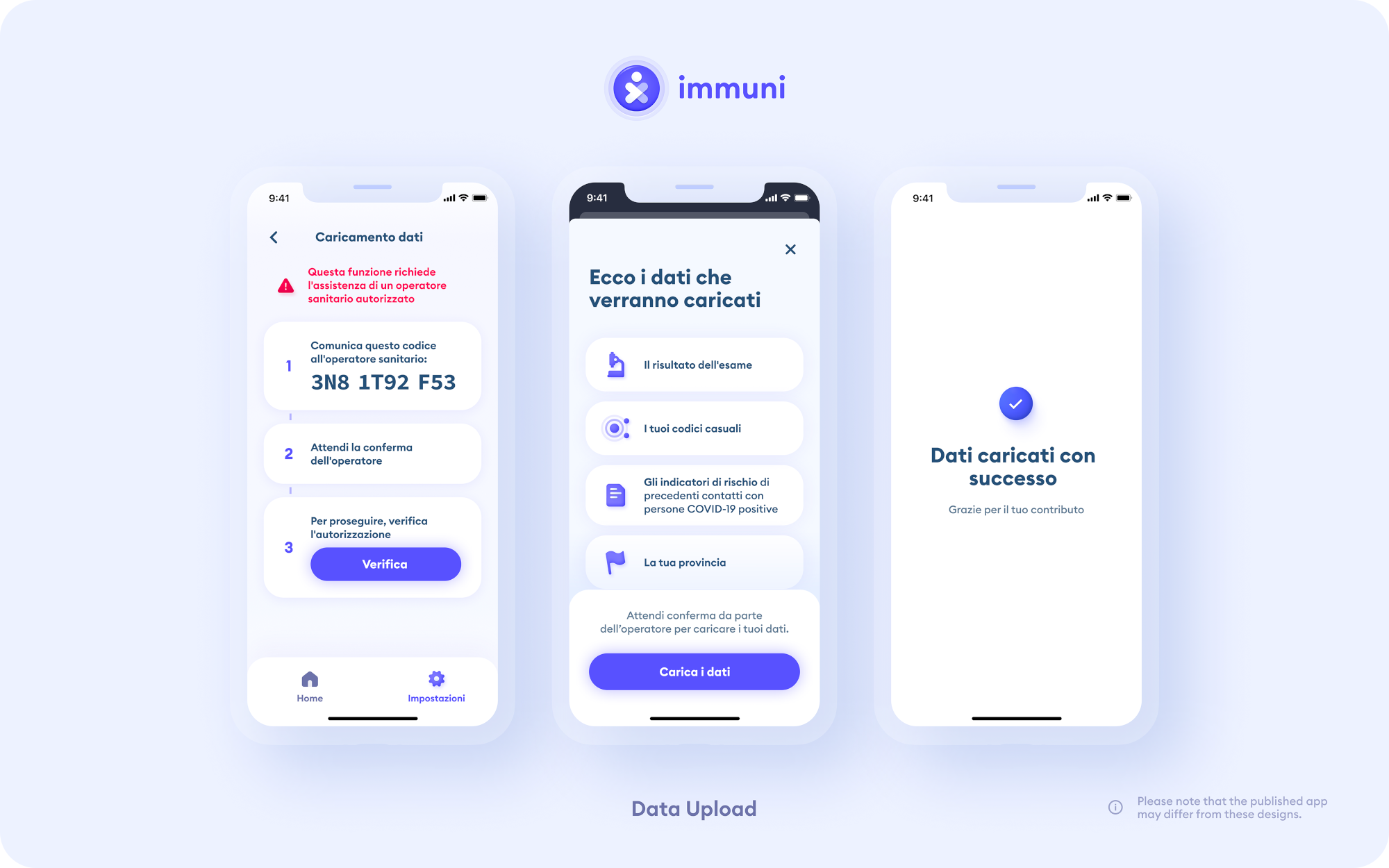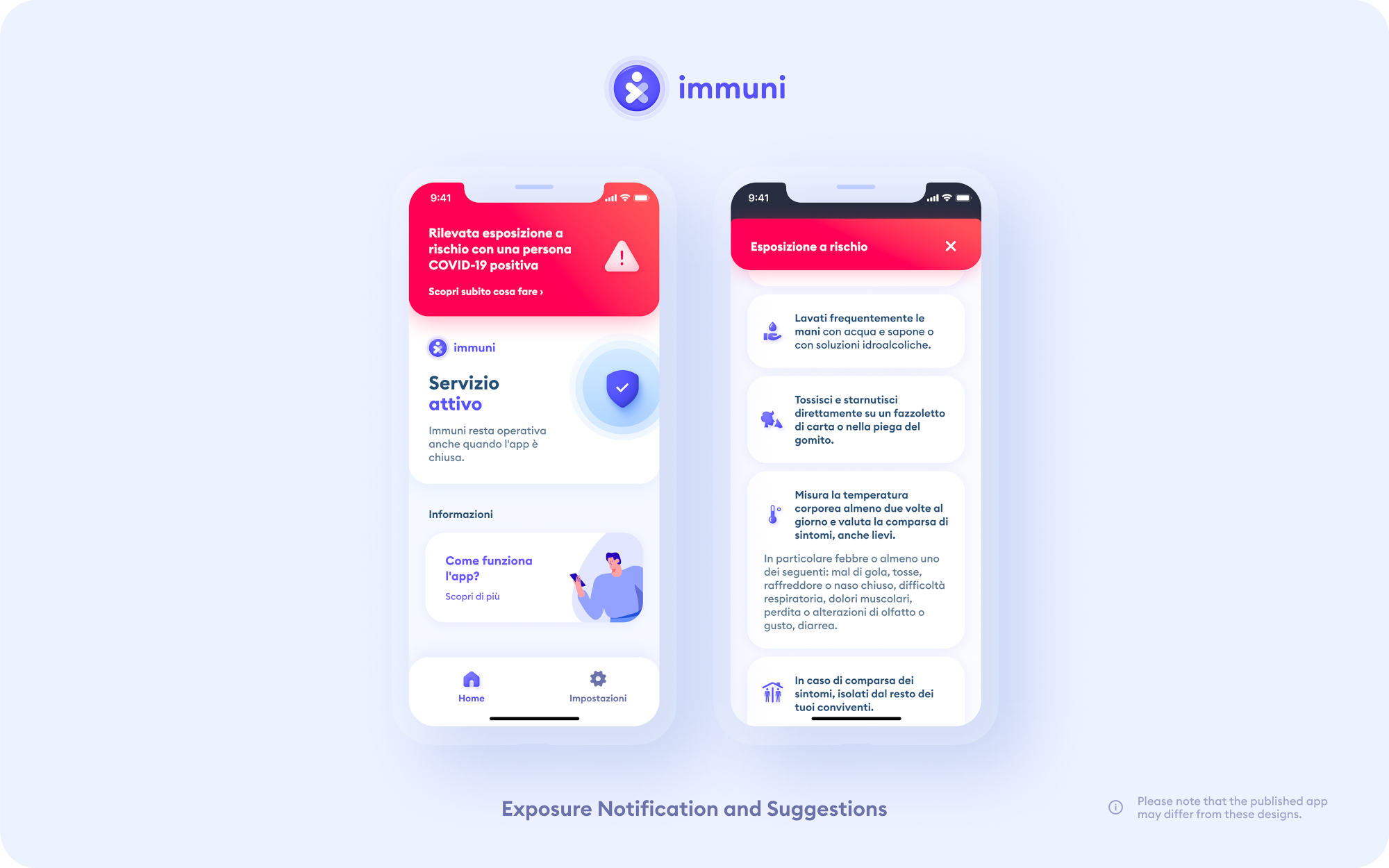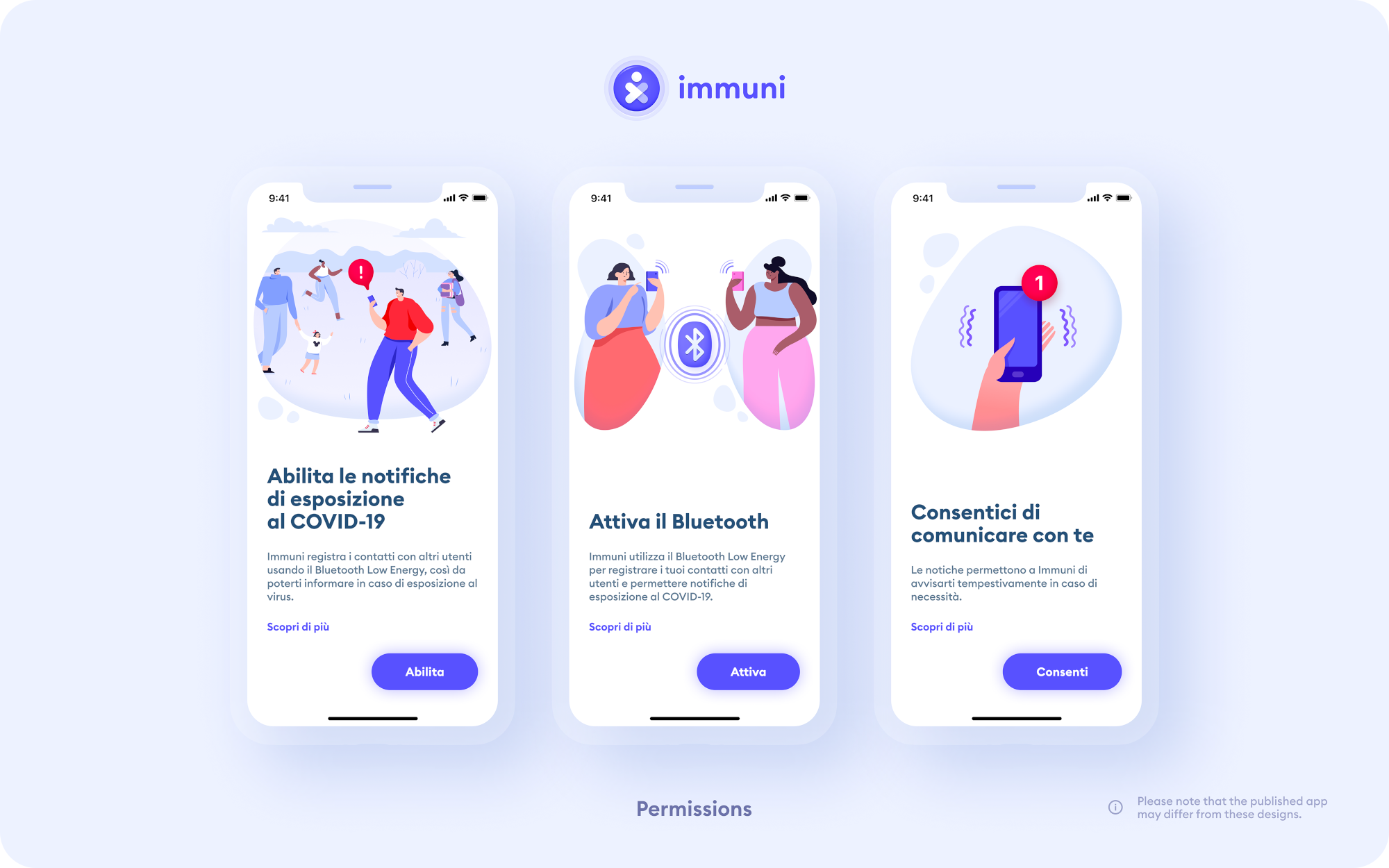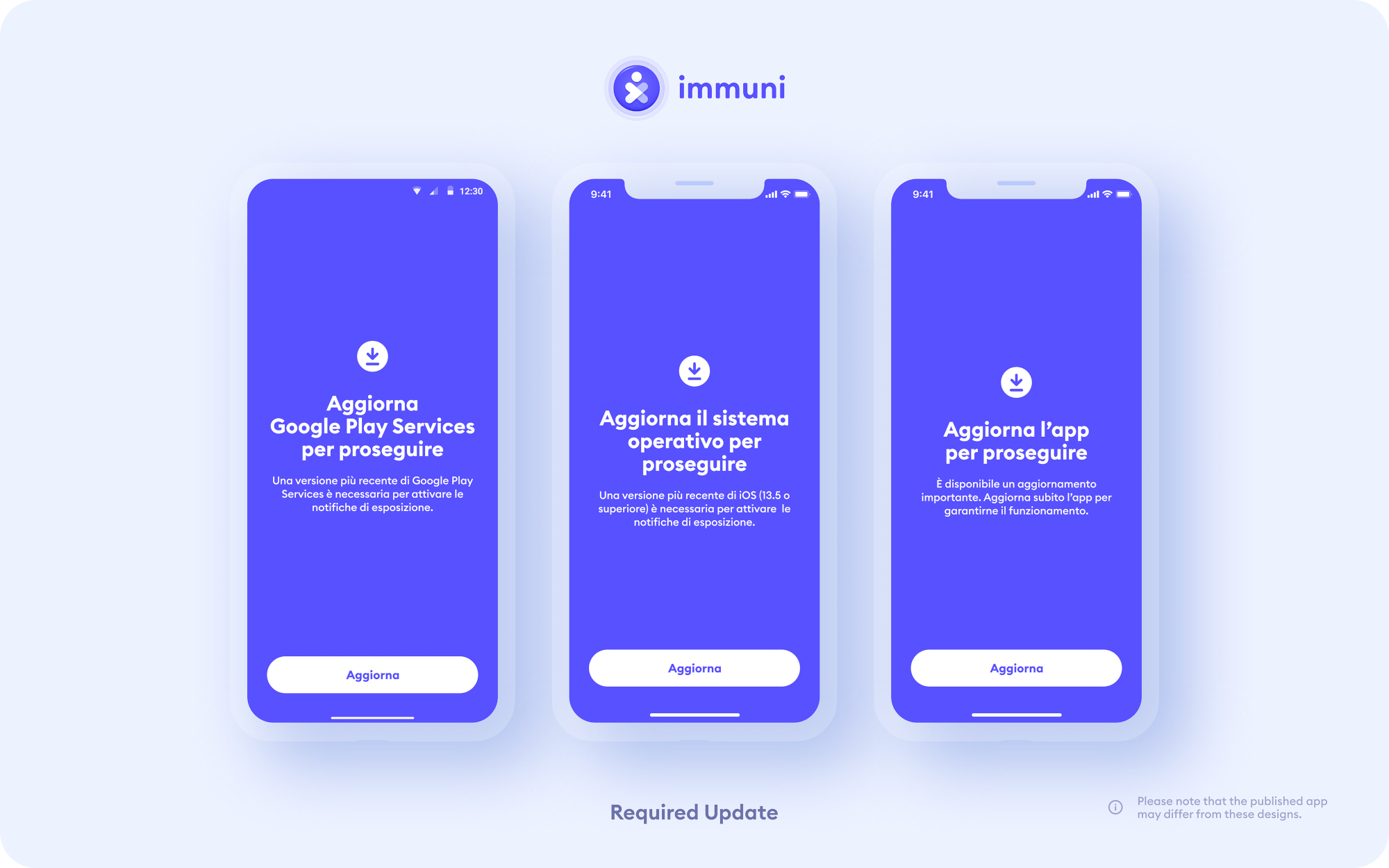
immuni 2.2.1
Mobile App
Immuni is a mobile app that helps us to fight the COVID-19 pandemic by notifying users at risk of carrying the virus as early as possible
Pubblicato da Presidenza del Consiglio dei Ministri
Contatto tecnico Ministero della Salute
Vitalità:
47%
L’indice di vitalità, così come previsto nelle linee guida sull’acquisizione e riuso di software per la PA, è calcolato prendendo in considerazione le seguenti quattro categorie:
- Code activity: il numero di commit e merge giornalieri;
- Release history: il numero di release giornaliere;
- User community: il numero di autori unici;
- Longevity: l’età del progetto.
I range di ogni misura possono essere trovati nel file vitality-ranges.yml.
Stato di sviluppo: stabile
Funzionalità del software
BLE Contact Tracing
Upload Recent Temporary Exposure Keys
Leverages the Apple and Google Exposure Notification framework
Presidenza del Consiglio dei Ministri
Informazioni di dettaglio
immuni 2.2.1
Mobile App
Ultimo rilascio 2021-01-27 (2.2.1)
Tipo di manutenzione internal
Licenza AGPL-3.0-only
Piattaforme
ios
android
Lista dipendenze Nessuna
Piattaforme abilitanti Nessuna
Conformità GDPR Linee Guida Design Misure Minime Sicurezza Modello Interoperabilità
Lingue supportate
Italiano
Inglese
Documentazione API immuni API
Descrizione estesa
Immuni is a technological solution that centres on an iOS and Android smartphone app. It helps us to fight the COVID-19 pandemic by notifying users at risk of carrying the virus as early as possible—even when they are asymptomatic. These users can then isolate themselves to avoid infecting others, and seek medical advice.
Immuni’s design and development are based on five main principles: utility, accuracy, scalability, transparency, and privacy.
It features a contact tracing system based on Bluetooth Low Energy:
- When two users come sufficiently close to each other for long
enough, their devices record each other’s _rolling proximity
identifier_ in their local memory. These identifiers are generated
from _temporary exposure keys_ and change multiple times each hour.
These keys are **generated randomly** and change once per day.
- When a user tests positive for SARS-CoV-2, the virus causing
COVID-19, they have the option to upload to a server their recent
temporary exposure keys. This operation can only happen with the
validation of a **healthcare operator.**
- The app periodically downloads the new temporary exposure keys and
uses them to derive the infected users’ rolling proximity
identifiers for the recent past. It then matches them against
those stored in the device’s memory and **notifies the user** if
a risky contact has occurred.
- The system uses **no geolocation data** whatsoever, including GPS
data. So, the app cannot tell where the contact with a potentially
contagious user took place, nor the identities of those involved.
To implement its contact tracing functionality, Immuni leverages the Apple and Google Exposure Notification framework. This allows Immuni to be more resilient than otherwise would be possible.
Besides the temporary exposure keys, the Immuni app also sends to the server some analytics data. These include epidemiological and technical information, and are sent for the purpose of helping the National Healthcare Service (Servizio Sanitario Nazionale) to provide effective assistance to users, in compliance with art. 6.2.b and 6.3 of the Law Decree 28/2020.
Immuni is being developed while paying a lot of attention to user privacy and a number of measures have been taken to protect it. For example, the app collects no personal data that would disclose the user’s identity, such as the user’s name, age, address, email, or phone number.

